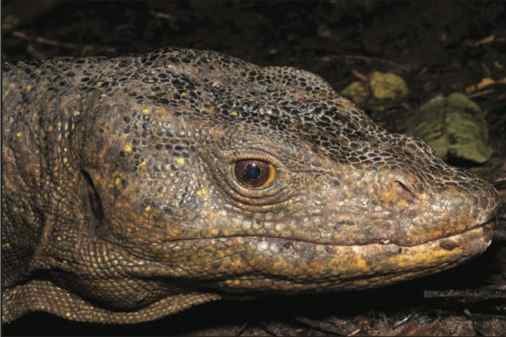Updated Data for Newly Described Monitor Lizard

Some of Southeast Asia’s most enigmatic reptile species include the arboreal (tree-dwelling), frugivorous (fruit-eating) monitor lizards of the central and northern Philippines. Comprised of just three known species, this distinct group has even been assigned to its own subgenus, Philippinosaurus on the basis on cranial features and dentition (characteristics of the teeth).
Knowledge on the biology of Philippine frugivorous monitor lizards has been slow to accumulate. The first known species (Varanus olivaceus) was thought to be extinct for over a century, but it was rediscovered and thoroughly described. Two more species, V. mabitang and V. bitatawa, have been described and studied in some detail, but the data has not been extensive.
Our recent studies have accumulated additional distribution records and genetic samples for Varanus olivaceus and V. bitatawa. Our results greatly expand our understanding of where the species live, the genetic differences between them, plus provide new avenues for research on reproduction, feeding behavior, and conservation of these rare, endemic Philippine forest monitors.
Conservation of these species will be difficult or impossible until field-based studies of distribution patterns, natural history, diet, home range ecology, and habitat requirements have been assessed.
–Tucker Walton
Welton, L.J., C.D. Siler, A.C. Diesmos, M.L.L. Diesmos, R.D. Lagat, R.M. Causaren, and R.M. Brown. 2012. Genetic identity, geographic ranges, and major distribution records for frugivorous monitor lizards of Luzon Island, Philippines, Herpetological Review 43(2): 226–230. pdf

